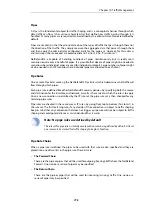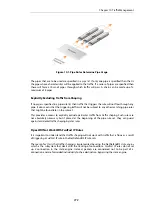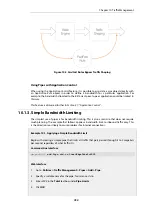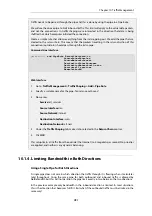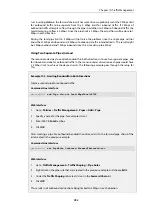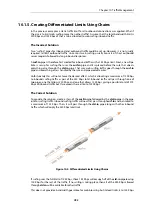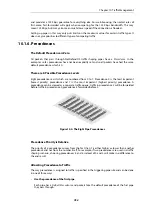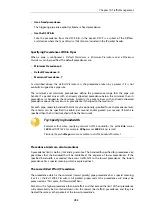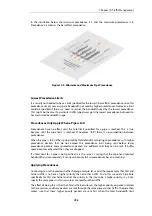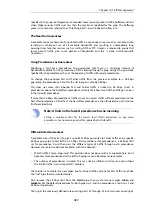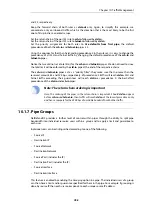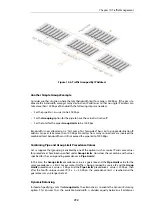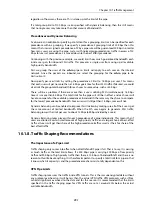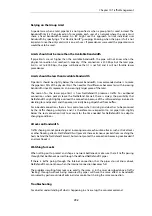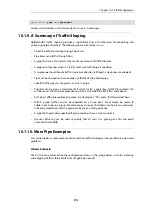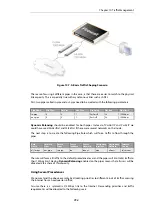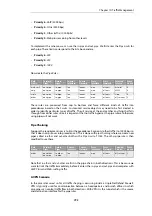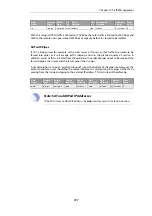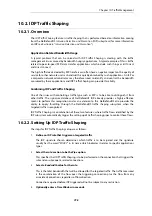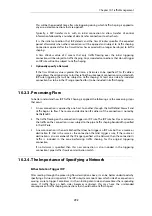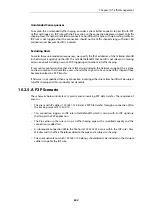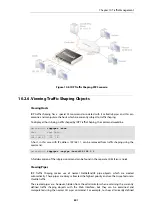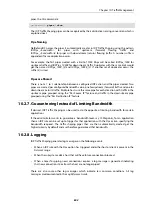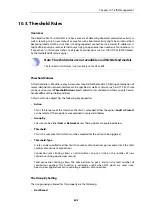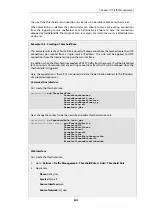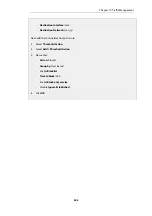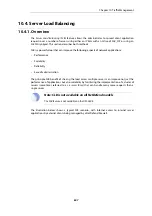
Relying on the Group Limit
A special case when a total pipe limit is not specified is when a group limit is used instead. The
bandwidth limit is then placed on, for example, each user of a network where the users must
share a fixed bandwidth resource. An ISP might use this approach to limit individual user
bandwidth by specifying a "Per Destination IP" grouping. Knowing when the pipe is full is not
important since the only constraint is on each user. If precedences were used the pipe maximum
would have to be used.
Limits should not be more than the Available Bandwidth
If pipe limits are set higher than the available bandwidth, the pipe will not know when the
physical connection has reached its capacity. If the connection is 500 Kbps but the total pipe
limit is set to 600 Kbps, the pipe will believe that it is not full and it will not throttle lower
precedences.
Limits should be less than Available Bandwidth
Pipe limits should be slightly below the network bandwidth. A recommended value is to make
the pipe limit 95% of the physical limit. The need for this difference becomes less with increasing
bandwidth since 5% represents an increasingly larger piece of the total.
The reason for the lower pipe limit is how NetDefendOS processes traffic. For outbound
connections where packets leave the NetDefend Firewall, there is always the possibility that
NetDefendOS might slightly overload the connection because of the software delays involved in
deciding to send packets and the packets actually being dispatched from buffers.
For inbound connections, there is less control over what is arriving and what has to be processed
by the traffic shaping subsystem and it is therefore more important to set pipe limits slightly
below the real connection limit to account for the time needed for NetDefendOS to adapt to
changing conditions.
Attacks on Bandwidth
Traffic shaping cannot protect against incoming resource exhaustion attacks, such as DoS attacks
or other flooding attacks. NetDefendOS will prevent these extraneous packets from reaching the
hosts behind the NetDefend Firewall, but cannot protect the connection becoming overloaded if
an attack floods it.
Watching for Leaks
When setting out to protect and shape a network bottleneck, make sure that all traffic passing
through that bottleneck passes through the defined NetDefendOS pipes.
If there is traffic going through the Internet connection that the pipes do not know about,
NetDefendOS cannot know when the Internet connection becomes full.
The problems resulting from leaks are exactly the same as in the cases described above. Traffic
"leaking" through without being measured by pipes will have the same effect as bandwidth
consumed by parties outside of administrator control but sharing the same connection.
Troubleshooting
For a better understanding of what is happening in a live setup, the console command:
Chapter 10: Traffic Management
792
Содержание NetDefendOS
Страница 30: ...Figure 1 3 Packet Flow Schematic Part III Chapter 1 NetDefendOS Overview 30 ...
Страница 32: ...Chapter 1 NetDefendOS Overview 32 ...
Страница 144: ...Chapter 2 Management and Maintenance 144 ...
Страница 220: ... Enable DHCP passthrough Enable L2 passthrough for non IP protocols 4 Click OK Chapter 3 Fundamentals 220 ...
Страница 267: ... SourceNetwork lannet DestinationInterface any DestinationNetwork all nets 4 Click OK Chapter 3 Fundamentals 267 ...
Страница 284: ...Chapter 3 Fundamentals 284 ...
Страница 360: ...The ospf command options are fully described in the separate NetDefendOS CLI Reference Guide Chapter 4 Routing 360 ...
Страница 392: ...Chapter 4 Routing 392 ...
Страница 396: ...Web Interface 1 Go to Network Ethernet If1 2 Select Enable DHCP 3 Click OK Chapter 5 DHCP Services 396 ...
Страница 419: ... Host 2001 DB8 1 MAC 00 90 12 13 14 15 5 Click OK Chapter 5 DHCP Services 419 ...
Страница 420: ...Chapter 5 DHCP Services 420 ...
Страница 424: ...2 Now enter Name lan_Access Action Expect Interface lan Network lannet 3 Click OK Chapter 6 Security Mechanisms 424 ...
Страница 573: ...Chapter 6 Security Mechanisms 573 ...
Страница 575: ...This section describes and provides examples of configuring NAT and SAT rules Chapter 7 Address Translation 575 ...
Страница 607: ...Chapter 7 Address Translation 607 ...
Страница 666: ...Chapter 8 User Authentication 666 ...
Страница 775: ...Chapter 9 VPN 775 ...
Страница 819: ...Chapter 10 Traffic Management 819 ...
Страница 842: ...Chapter 11 High Availability 842 ...
Страница 866: ...Default Enabled Chapter 13 Advanced Settings 866 ...
Страница 879: ...Chapter 13 Advanced Settings 879 ...

